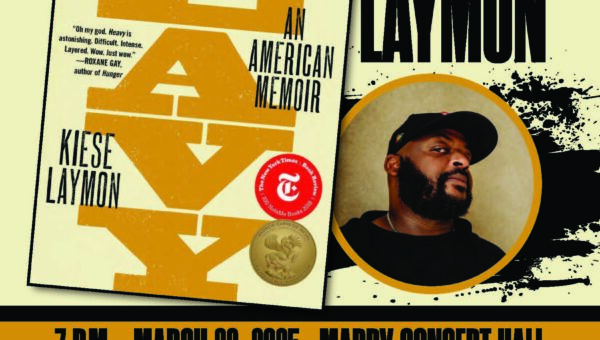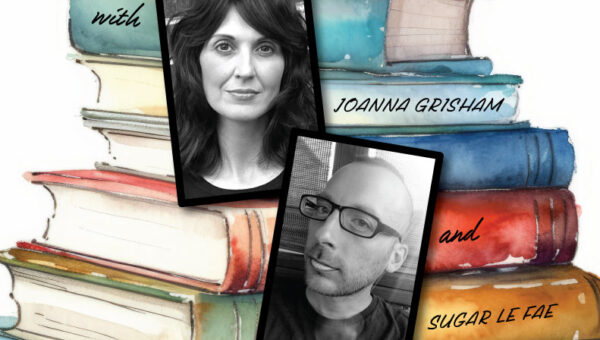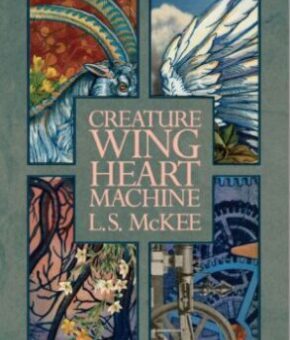Amy Wright: Conducting research in the Amazon for your latest book, The Songs of Trees: Stories from Nature’s Great Connectors, you were stung by a bullet ant, reported to have the insect world’s most painful sting. You write: “The pain was like a strike on a bell cast from the purest bronze: clear, metallic, single-toned,” calling it “my initiation into one reality of the forest.” How did this painful encounter inform other realities of the forest?
David Haskell: This part of the Amazon forest is more diverse than any other known place on Earth. Conflict and competition are therefore intense: weaponry and poison abound. The ant bite was one manifestation of this reality, a very tangible expression of the forest’s life. But life in this forest is not all about conflict. Paradoxically, the intensity of competition, predation, and parasitism in the Amazon has caused evolution to forge unions among allies. So instead of separating life into “individuals,” the forest has instead welded networks. These networks take many forms: roots melded with fungi, ants working with microbes, animals uniting in groups. The ant bite underscored the intensity of conflict but also pointed toward other realities, processes of cooperation.
Wright: Are you often stung, bitten, or otherwise subject to unpleasantries in pursuit of research?
Haskell: Mostly I experience delight at waking my senses to the lives of other creatures. I run into my share of biting flies and ticks, but with some care these can mostly be avoided. In this I am lucky: I live in an era where people with access to money and doctors have clothes and drugs to ward off and treat many troublesome pests. This, though, is a bubble of zoological unreality. Parasitism and disease are ubiquitous for most animals, humans included. So our modern sanitation and knowledge of disease shield us from one dimension of the lived reality of ecology.
Wright: As the book’s title indicates, you turn your ear in this book to trees like the green ash, cottonwood, ponderosa pine, redwood, and others. What inspired you to apply your sense of hearing in particular?
Haskell: Sound travels around and through barriers. It reveals stories and processes that are otherwise hidden. It is also an underutilized sense in botany. So tree sounds are both a rich source of stories and a relatively unexplored realm. I came to them mostly through meditation on soundscapes. As I teach students about birdsong, I invite the students into soundscape awareness exercises: small “laboratories” in attentive listening. As I deepened this practice I came to hear the interesting voices in trees. These sounds reveal the form of trees: maple in summer and winter, pine in ice or wind, palm on a calm day and a storm –amazingly different sounds. They also tell us about the lives of other species in trees, including the voices of humans whose lives are interwoven with trees. Through these sounds I try to understand the nature of each tree.
Wright: In the chapter titled “Green Ash,” you return for years to a tree felled during a windstorm, detailing the vital process as beetles, foxes, microbes, and others reconfigure its resources. You write: “Deadwood is effervescent creativity, regenerating as its ‘self’ degenerates into the network.” How has the forest informed your sense of individuality in relation to human social and ecological networks?
Haskell: First it has informed my understanding of death, especially for trees. Biologically, the line between life and death is not so clear for these networked giants. When a tree falls its life in the network continues, albeit in an increasingly decentralized way. So the fallen ash lives in death.
The forest is a living network where “individuality” is a temporary manifestation of relationships. Networks of interconnection persist, evolve, and are the fundamental biological “ground” of being in the forest, not “selves.” I mean that not in a mystical way, but as a reality incarnate in the genetics, physiology, and ecology of all creatures. The same is true of the “human” body which is, in fact, a living community of thousands of species of bacteria, fungi, and larger “human” cells that are themselves aggregations of formerly free-living bacteria. Our culture takes this to another level: the social nature of humans means that most ideas live in the networked relationships among people, not in “individual” minds.
Wright: My favorite descriptions in the book may be your translations of bird songs, such as the Northern flicker’s “1890s telephone ringer, wooden edition,” and the Pileated woodpecker’s “Old man in no hurry to nail loose boards.” Might you provide such a translation of the fallen ash’s song, condensing its long and complex melody to suggest the tone or feeling?
Haskell: The ash is a mountain stream, its sounds slowed a thousandfold. We hear two melodies, both lively, yet moving in opposite directions. The first sound is of water’s ensnarement by gravity, each splash the sound of descent, of the relentless rule of physical law. The second sound is of fish swimming upstream, life resisting the dead hand of physics: swish and slap of fish powered by the lust to breed. The fallen ash is animated by this tension between decay and new life, entropy and new order.
Wright: That’s lovely, thank you! Your first book, The Forest Unseen, won the National Academies’ Best Book Award for 2013 in part for your rich, creative metaphors. How does your scientific training, research, or teaching practice you in making comparisons?
Haskell: Most of science is metaphor: words and images that we use to imagine what our senses cannot apprehend. Atomic bonds. Evolutionary trees. Photons. Cycles of carbon and phosphorous. A metaphor is only helpful, though, if it emerges from experience. Otherwise it is merely clever. In science this experience is often highly organized into experimental investigations. But sometimes experience is also more informal and qualitative. In my writing I try to integrate what we’ve learned from experiments and other organized forms of investigation with the day-to-day experience of a tree or a patch of woodland. Metaphors help to build that bridge. I use those that feel true to both my understanding of the science and my experience in the field. If they lack that feeling of resonance, I slice them out and seek another. Our educational system sometimes teaches us that metaphor and imagination belong in the humanities and “facts” belong in the sciences. The human mind, though is not divided, and so such divisions seem absurd to me.
Wright: Your research as an Oxford and Cornell-trained biologist has been funded by The National Science Foundation, the John Simon Guggenheim Memorial Foundation, and other esteemed institutions, and been published in numerous scholarly journals. What inspired you to also begin writing for a lay audience?
Haskell: I don’t see a firm line between the practices of science, teaching, and writing for a more general audience. In each case we’re puzzling over the world, trying to understand and communicate our imperfect understanding. Yet today there is a high wall between the insights of science and the rest of our culture. Most people have little to no opportunity to learn from the amazing, troubling, inspiring, and useful insights of science. I hope my books will help to erode that wall a bit, sharing scientific understanding of the lives other species and of the world’s evolution and ecology. These stories are the stories of our homes and our cousins. We cannot understand who we are as humans without understanding our ongoing relationships in life’s community. Listening to stories of our kin and neighbors is therefore not only a source of fascination and joy, it can help us understand what a good future might look like. The movement of ideas in the books is also, I hope, multidirectional. They are not just about taking “science” outside its walls and telling these stories in other venues. I also bring ethical and imaginative inquiry into the process of science, trying to find the limits of the scientific method and underscoring the need for science to be informed, guided, and interpreted by other ways of thinking and knowing. Science itself yields no conclusions about ethics or meaning, and so is incomplete. My books are attempts to find more wholeness.
Wright: What does writing for the public allow you to express that a scientific audience alone does not?
Haskell: Scientific papers are concise, focused on the description and interpretation of a particular hypotheses, experiments, or observations. Their utility and power derive from this focus. The meaning of science, though, and the relationships among science, ethics, and culture, cannot be elucidated solely through formal scientific journal articles. My writing explores some of that territory. I also try to convey the sensory richness of lived experience at each of the locales in my book. Such descriptive and imaginative language is forbidden – for good reason – in technical papers. But in longer works of nonfiction I have the ability to roam and to attempt interconnection among diverse ways of thinking and fields of knowledge.
Wright: How has communication between scientists and the public changed during your career?
Haskell: When I was a science undergraduate it was clear within academia that any “public” engagement was considered, at best, a side-show. Or, worse, an activity for people for people who no longer had any “real” science left in them. Some of that haughty disdain for “popularizing” science remains, but it is, I hope, dying out. There are now extraordinary numbers of gifted scientists, journalists, artists, and others, both inside and outside academia, discussing science in a public realm. No longer is the conversation dominated by a few voices – Gould, Dawkins, Sagan – but is now more diverse. I say that not to criticize the inspiring and insightful work of these forebears but to underscore the changes brought about by diversification of science itself and of modes of human communication.
The field of “science communication” has also emerged. I love the fact that so much great work is happening, but I dislike the term. Does a composer or a musician describe their work as “note communication”? Our task as writers is not simply to “communicate” information in a one-way flow from scientists to non-scientists, but instead to reveal that insights of science, to puzzle over their many meanings, to integrate science with other realms of knowledge, to find new intersections of thought, to inspire further exploration, and to draw on the full creative capacity of the human mind and culture as we try to find good lives. We should be wary of walling these processes into a field separate from the rest of literary and artistic culture.
Wright: What would you like to see emerge or evolve in science writing in the next decade?
Haskell: I’d like science writing to cease to be a genre. Instead I’d like to see mainstream culture take seriously the practice and findings of science. We’re in a mass extinction, on a planet whose physical nature is changing so fast that human and non-human life is in crisis. We’re also on a planet of great beauty, a beauty that emerges from the extraordinary stories of millions of species. We belong within those stories. This great collision of beauty and brokenness goes mostly unexplored, unremarked upon. Instead our culture turns the gaze inward, into our own species, as if we’d learned nothing of note about the world and its perils in the last one hundred years. How could we achieve this end? Perhaps first by defragmenting education, removing the illusion that one can study science without ethics, philosophy without ecology, art without evolution, business without biology. Then, listen to the voices of the world, not just the voices echoing within human culture. For example, we’re deaf to trees. Is it then any wonder that in the first dozen years of this millennium the planet lost 2.3 million square kilometers of forest but regrew only 800,000? This appalling loss of forests ought to be of great concern to a species that depends on forests for air, water, and livelihood. Yet that species’ culture is largely unaware and unconcerned. Our stories have yet to catch up to the realities that we live within. Now, to compound the problem, we’re rushing headlong into technologies that draw our attention, by design, into ephemera.
Wright: When I heard you read at the Southern Festival of Books, you gave the audience an assignment—to choose a tree to observe for a period of time—suggesting that they not bring any expectations to their looking, including the hope of learning something. Was there a particular encounter or experience that taught you that expectations are distracting?
Haskell: Contemplative traditions have taught this for millennia. T S Eliot: wait without hope, for hope would be hope for the wrong thing. If we go into a meditative experience expecting particular forms of knowledge, sacrament, enlightenment, or outcomes we’re closing off the listening process, at least in part. Almost every time I go to the woods or to a tree to sit and listen I see or hear something unexpected. At a dead ash tree: the miniature wetlands in the bark crevices. On a city sidewalk: the way that trees mediate human social interactions. Under a Jerusalem olive: the changing odor of soil through the seasons. Expectation gets in the way of being awake to the sensory particularity of the moment. These sensory impressions are hints to the stories that were present beyond my expectations. They are the entryways into curiosity and learning. My hope is that my returning again and again to “listen” to trees, people can find those entryways. In a world more and more saturated with propaganda and manipulation, we need deliberate practices of finding and following these portals into truths.






